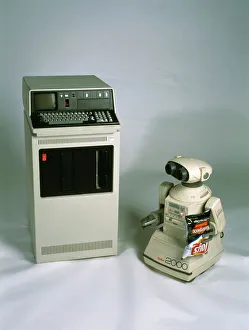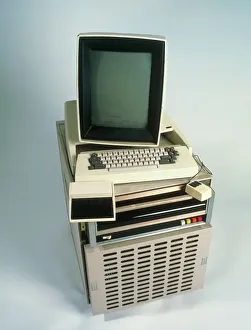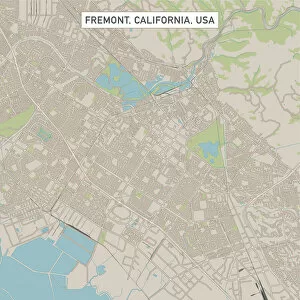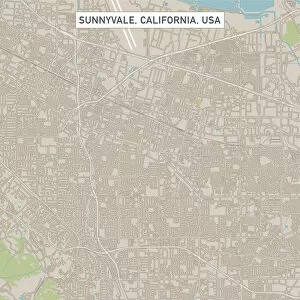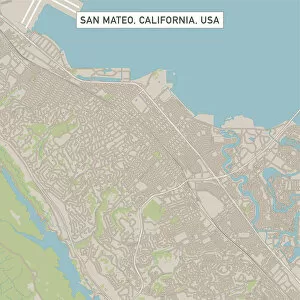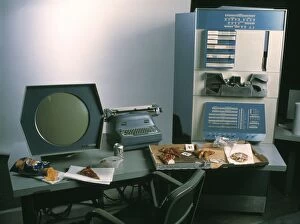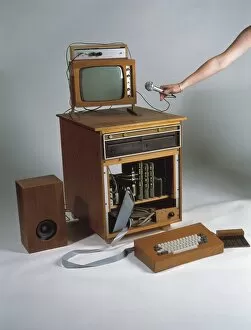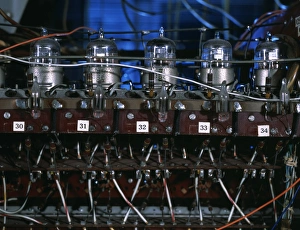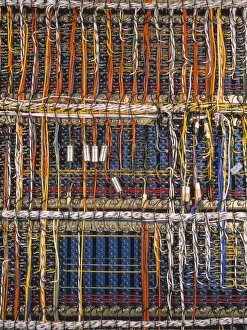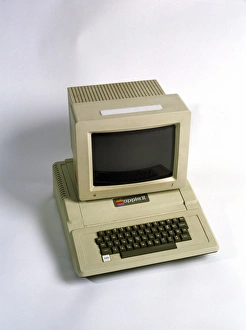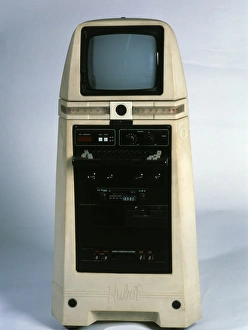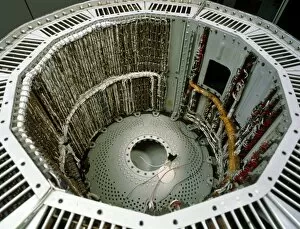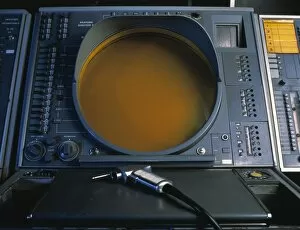Silicon Valley Collection
"Exploring the Technological Tapestry of Silicon Valley: From IBM 5110 to Omnibot 2000 Robot" Silicon Valley
All Professionally Made to Order for Quick Shipping
"Exploring the Technological Tapestry of Silicon Valley: From IBM 5110 to Omnibot 2000 Robot" Silicon Valley, a name synonymous with innovation and technological breakthroughs, has been at the forefront of shaping our digital world. This captivating region in California has witnessed the birth of iconic devices like the IBM 5110 and Omnibot 2000 robot, which revolutionized industries and captured imaginations. The journey through Silicon Valley's rich history takes us back to pivotal moments such as the introduction of Xerox Alto computer, a groundbreaking machine that paved the way for modern personal computing. Alongside it stood Heathkit H-1 analog computer and DEC PDP-1 computer, both instrumental in pushing boundaries and expanding possibilities. Aerial views reveal an expansive landscape where dreams became reality. The sprawling metropolis showcases not only cutting-edge technology but also vibrant communities that thrive on innovation. Fremont, Menlo Park, Sunnyvale, San Mateo – each city etched its own mark on this technological tapestry. As we delve deeper into this realm of ingenuity, we witness U. S. Secretary of State John Kerry engaging in enlightening conversations about technology policy with WIRED Editorial Chief Rob Capps. These discussions highlight how Silicon Valley's influence extends far beyond its geographical borders. Maps offer glimpses into these cities' intricate networks – streets lined with companies striving to push boundaries further every day, and is here that ideas are born and transformed into tangible realities; where entrepreneurs find inspiration amidst a sea of opportunities. Silicon Valley embodies more than just physical landmarks or impressive gadgets; it represents a mindset fueled by curiosity and relentless pursuit of progress, and is a place where visionaries gather to shape our future while honoring their past achievements. In this ever-evolving landscape driven by constant innovation, Silicon Valley remains an unparalleled hub for creativity and technological advancements - forever etching its name in history as the birthplace of the digital revolution.

